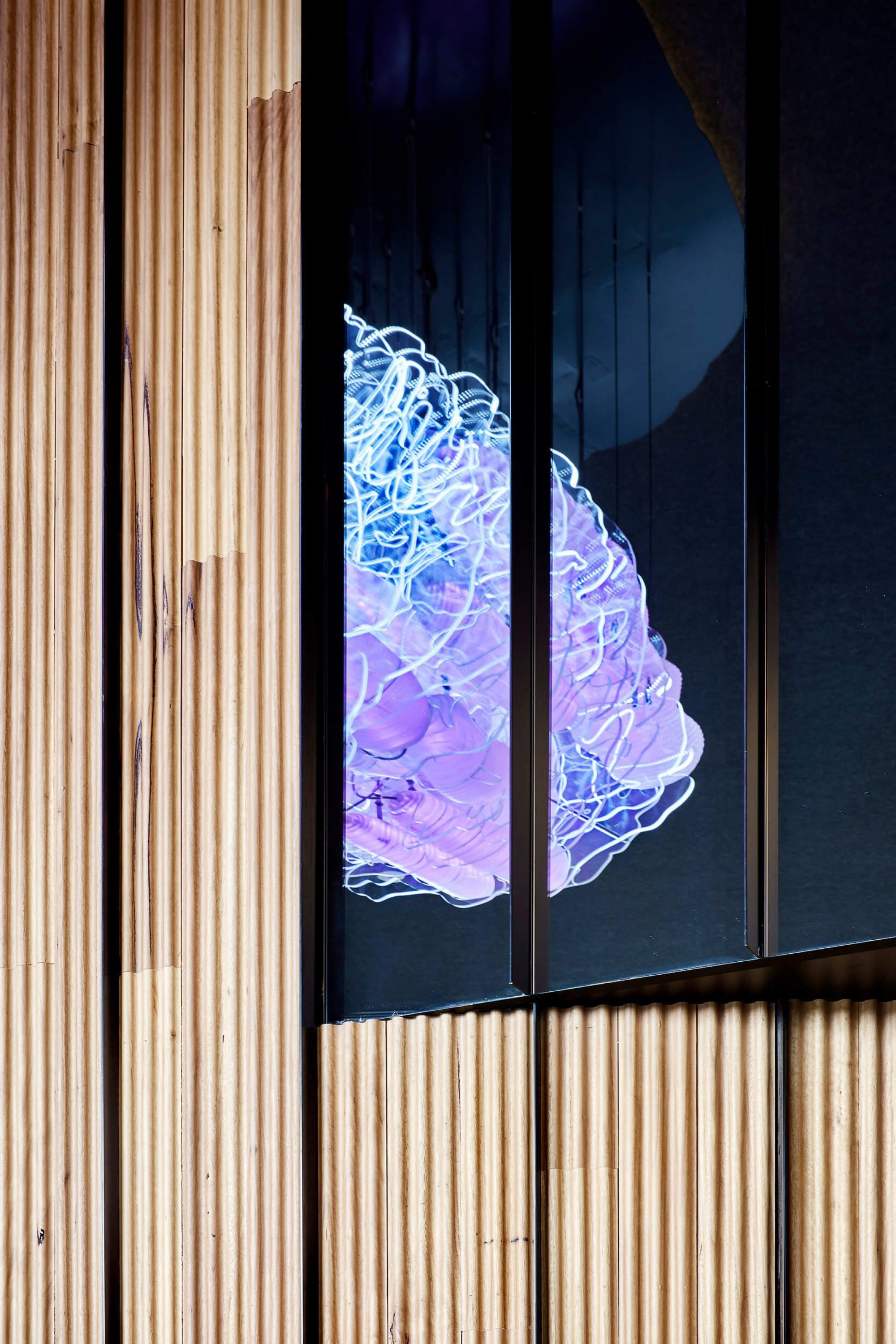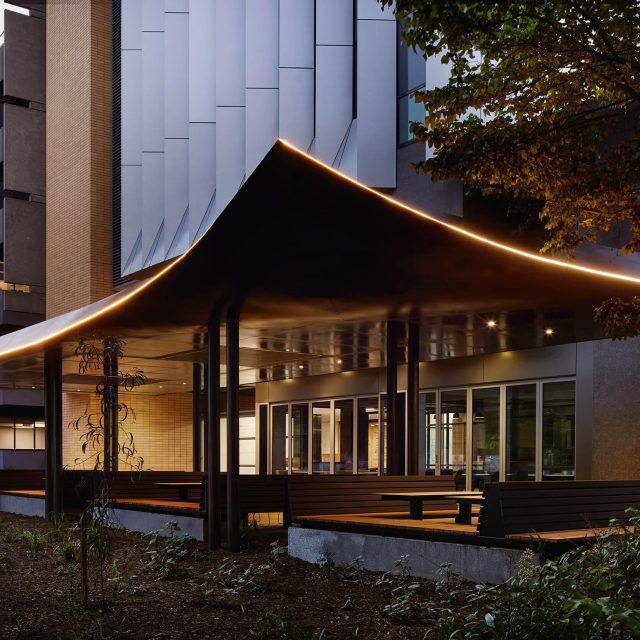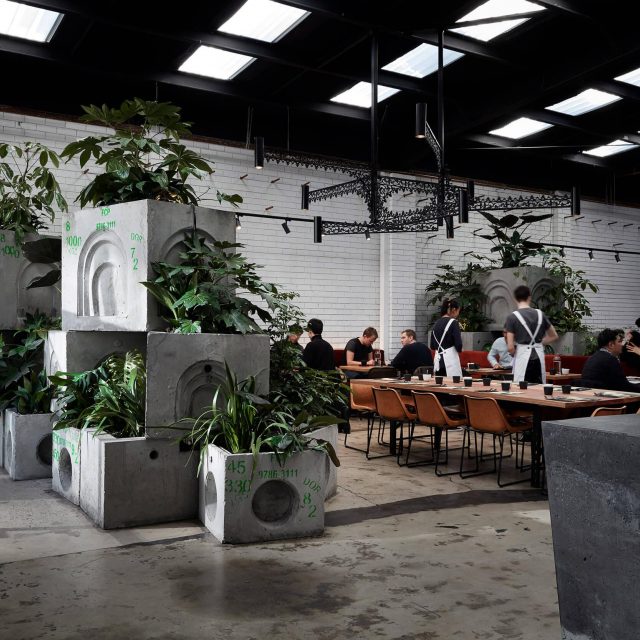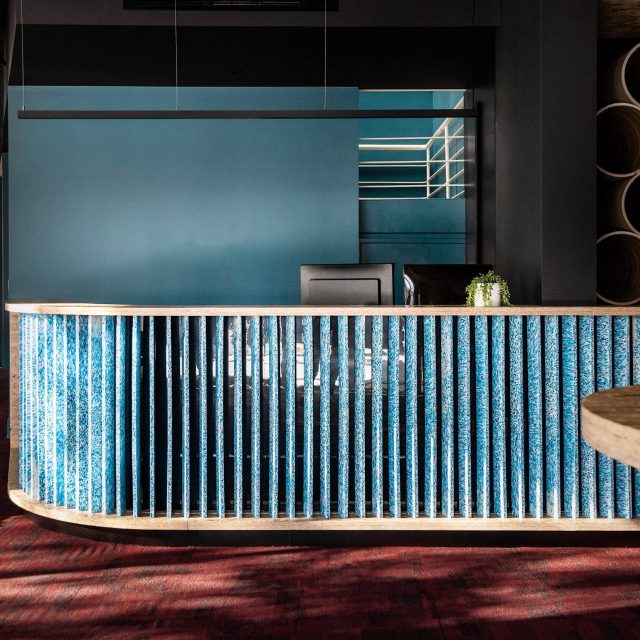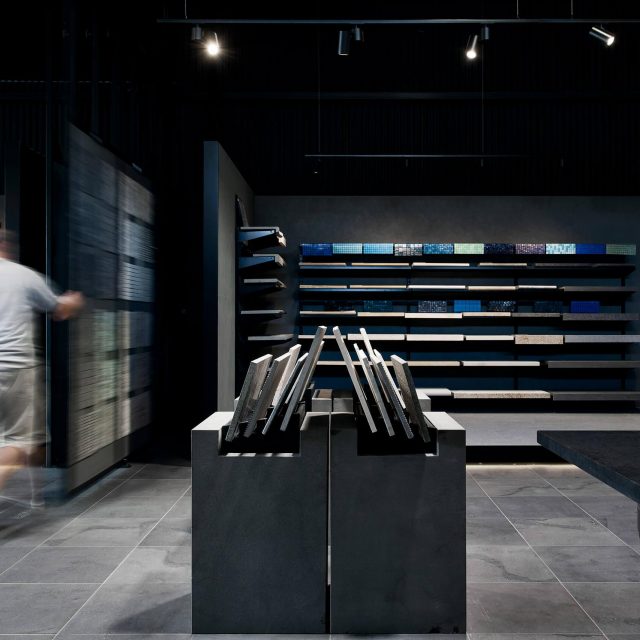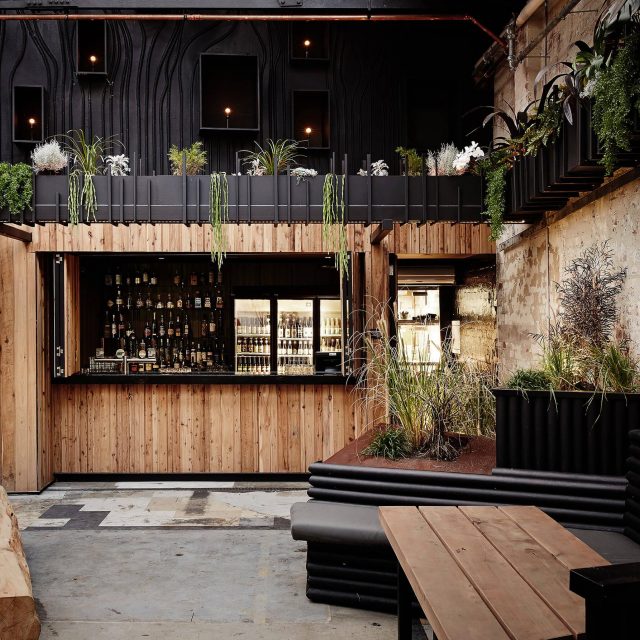
Within Monash University, Brainpark brings the often-disparate industries of science, technology and wellness into harmonious balance to create an inviting research facility. Contributing to an ongoing study into brain plasticity, the design encourages participants to undertake various physical and mental exercises aimed at reprogramming neural pathways to alter negative compulsive behaviours.
Located in a private section of an existing building, users are introduced to five key mind and body activities upon entry. Each activity is given an element of intrigue to encourage exploration. The virtual reality room exudes ‘hi-tech’ with its neon matrix, inspired by Tron. The spin room integrates an immersive 180-degree screen to transform into any environment, the contemplative meditation room frames the sky, the sleek gym pumps out vital information and the plush cognitive rooms offer a private moment for concentration.
Spatially, the layout is fluid with overlapping rhythms of timber, steel and mirror, visually eluding to the complex plasticity of the neural pathways being researched. The lower level connects the body, and the upper level the mind.
Extensive analysis was undertaken to understand research participants’ particular needs, fears, triggers, and how design could inspire their ongoing commitment to the program. From this, spaces were designed with consideration for comfort, privacy, and to emphasise the connection between mind, body and environment. Programs constantly link to the external environment leading to planted gardens.
Interactive design features play a key role in translating scientific data into an immersive user experience. A central brain light-sculpture translates data generated from various activities to show the parts of the brain being exercised, track changes, and ultimately provide participants with tangible information.
Brainpark supports voluntary participation in scientific research by combining comfort and cutting-edge technology with real-time biofeedback into a sleek, relaxed environment.
Back to Projects
